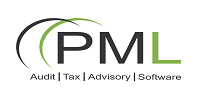Managing risk is an important task for any business. After you have determined what risks exist for your project and assessed their importance, you need to choose a strategy for dealing with each risk if and when it comes into play.
A RISK STRATEGY FOR BUSINESS SURVIVAL
The global financial crisis which wrecked business continuity and survival all over the world came in the wake of failed risk management and corporate governance practice. While it could be admitted to a reasonable extent that some companies have strategic risk management policies in place, no stringent commitment was made to ensure their effectiveness.
Prior to the global financial crisis, financial analysts who had foresight of the global economic trend knew that a global collapse was imminent. A commentator in the Financial Times dated 27 November 2007 wrote, “It is obvious there has been a massive failure of risk management across most of Wall Street.”
In discharging its oversight function, the Nigerian Securities and Exchange Commission (SEC) formulated the Code of Corporate Governance for Public Entities. As part of its requirements, the Code provides that the Board of public interest entities may establish a Risk Management Committee to assist it in its oversight function for risk management framework and strategy. It was recently reported that in 2013, banks in Nigeria suffered revenue loss of not less than N10 billion arising from regulatory risks. Therefore, the requirements of the Code will assist institutions in Nigeria to better manage their risk exposures and ensure best practice in corporate governance.
At the international spher>e, responsive voluntary organisations within the private sector and world economy leaders had made strategic search for the right approach and best practice for risk management, corporate governance among others. This reactive move led to the formulation of policies and strategic guidelines to ensure healthiness of businesses all over the world. A typical example is the Sarbanes-Oxley Act 2002; a strategic and regulatory framework developed by the US congress. The Act was enacted to address and forestall future corporate collapse as evident in Enron and other similar multinationals. In addition, Integrated Internal Control Framework was developed by Committee of Sponsoring Organisation (COSO), a private sector voluntary organization.
As part of the effort in building an effective risk strategy, the above local and foreign regulatory frameworks highlight and place the responsibility for risk management on the Board of public interest entities. In underscoring this, the Board is required to constitute audit and risk committees to enable it discharge its oversight duties. From the perspective of COSO framework, risk strategy is expected to be driven from an enterprise-wide angle. The Board, through the audit committee, in conjunction with the risk committee where applicable, will have to ensure that:
• Responsibilities for risk management are clearly defined across the organisation
• Risk assessment is built into its business processes
• Risks are identified, assessed, mitigated, monitored and reported
• Risk solutions are deployed to enhance the effectiveness of risk management processes
• Risk tolerance, appetite, culture and limits are clearly defined
Business continuity and survival will not be possible if the above risk strategic policies are not implemented on a timely basis using the right approach. For further information and enquiries on our risk management services and solutions, you can visit our website – www.pml.com.ng


